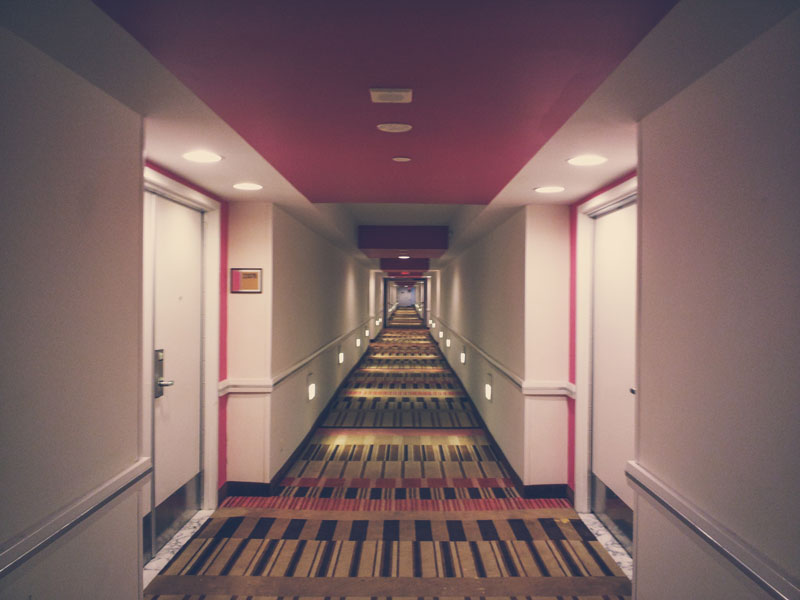What’s the most desired amenity by hotel guests? If you guessed a free breakfast, you’d be…Wrong! It’s fast and secure WiFi connectivity.
In a 2013 Study, Forrester Research concluded that out of those polled, 94% agreed that above anything else, they wished all hotels offered quality wifi throughout the hotel and in their rooms.
Kristine Rose, vice president of brands for Hyatt said in a statement recently, “Internet connectivity is no longer an amenity. It has become an integral part of travelers’ daily lives and a basic expectation.”
To that point, wireless has become a mission-critical service; a utility just like electricity that every hotel or resort, big or small requires today. However, it’s also common that the WiFi many hotels are offering is underwhelming, unsecured, and overall useless.
Poor wifi performance costs your hotel not only from a staff perspective form spending valuable resources resolving wireless problems but also from the guest’s experience.
Like so many other industries, the quality of your WiFi has become a major deciding factor on guest’s perceptions of the quality of the hotel itself.
To help you avoid frustrated guests, decreasing repeat visitors and fewer negative reviews, here are some rules and best practices to create the perfect hotel WiFi network.
It’s for Your Guests
Remember this above all else, the whole reason you’re investing in a fast, secure hotel WiFi system is to better serve your guests.
You have to constantly be aware that your guests’ and really of your end-users’ requirements are driving your WiFi decisions.
Understanding exactly what factors are most critical to your guests when using wireless connectivity will help you to create a network that is designed to support those exact wants and needs.

So, before you deploy your new network, think to yourself, “How do my guests use WiFi, and what do they expect?
The common saying at SecurEdge is, above all else, the application drives the infrastructure.
Okay let’s get into some of the details.
Security Comes First
There are two major challenges when it comes providing secure wireless access at hotels and resorts. First, how does your hotel secure devices that it doesn’t own (BYOD) and two, how do you secure the amount of different types of devices?
Security today is not about controlling the devices themselves (unless you own them), it's about controlling the behavior of those devices.
Your security infrastructure needs the ability to control where your end-users can go on the network and what they can do.
At the minimum, your hotel will need:
- A Firewall
- Role-based access control
- Profiling
- IDS/IPS
Check out the video below to learn how your hotel can stay secure using Role-based access control.
Ultimately, security comes down to providing your end-users with everything they need, nothing more and nothing less.
Planning for Capacity
After security comes performance, and this means starting with planning for capacity.
You need to have a clear understanding of the different types and numbers of devices that will be accessing your hotel’s wireless network.
Next, you will need to plan for what types of applications are being used, are end-users streaming video, using social apps, email, business applications like Salesforce, Skype?
Taking these factors into account during the design phase of your network will give you the context needed to deliver the right level of performance across your entire business.
Access Point Placement
A long time ago, back in 2008, it was an acceptable practice to hang your access points in the hallway. Well, that was almost 10 years ago, and it’s not anymore.

If your goal is high-performance, which it should be, then placing your APs down the hallways is the last thing you should do.
I know it seems easier to just throw a bunch of access points up and call it a day, however we’re trying to do it right not what’s easiest.
By placing your access points in the rooms you can use the hotel itself to help separate the RF. This also makes sense because where do most of your guests spend their time—in their rooms.
This will also help to lower co-channel interference and contention domains, creating higher data rates, meaning better performance and happier more productive guests.
Measuring Performance Never Stops
Utilizing social media platforms like Facebook and Twitter, and review sites like Yelp and TripAdvisor, your guests and even employees have never had an easier and more effective tool for unleashing their dissatisfaction.
Combined with increasing user expectations and you have a recipe for disaster if your wireless system doesn’t always perform perfectly.
There’s almost no room for error, and I can understand that point.
If WiFi is viewed as the same as electricity, then this makes sense. Would you find it acceptable if you checked into your room and found out that the power didn’t work or that it only worked some of the time? No, I don’t think you would.
To avoid bad reviews and spotty performance you need to measure performance on an on-going basis.
Your wireless system should incorporate a network management system and for many hotels some level of managed support to provide services like:
- Monthly health checks
- Firmware reviews
- Scheduled system tests
- Tier 2 support
- Proactive alerts
- Threshold based triggers
- And Client tracking to name a few
Once your Wi-Fi network has been deployed, things start to change. Even if you have the correct system in place wireless is still dynamic.
The types of devices change, the number of devices might increase, the RF environment itself can change and that’s why maintaining proper performance is a never-ending cycle of analysis and updates.
Keeping up with Demand
We all know that technology changes at a rapid pace. From new devices coming out, to how we use Wi-Fi, new technology is always right around the corner.
However, what most hotels probably don’t know is that because of this rapid evolution of technology our wireless networks also must change over time to properly function.
It’s not like buying a car, where after you’ve paid it off you’re still left with a car that, although not the latest and greatest, still can get you from point A to point B more than comfortably.
No, with technology and specifically wireless, once the technology has evolved past a certain point older tech and systems start to breakdown.
At best your wireless system will last between 3-4 years, at which point it will need to be upgraded.
Wireless systems can be costly to deploy and maintain, so how do you consistently provide your guests with the best class of service year after year after year?
Utilizing a subscription, WiFi as a Service empowers hotels to afford the exact system they need to deliver the experience their guests demand.
WiFi as a Service offers many benefits, including:
- Affordable monthly payments
- Scalability to fit your needs up or down
- Guarantees you always have the latest technology deployed
- Enables you to reinvest capital towards other mission-critical projects
WiFi as a Service provides an effective answer to the question of how to keep up and it simplifies networking, making it available to every business.
If you’d like to see how much perfect hotel WiFi costs, use our free quoting tool to get started.
Choosing the Right Partner
Designing, deploying and managing large-scale, enterprise grade wireless networks is not an easy task. We’ve been doing it for over 10 years; spent countless amounts of time and money on the necessary certifications and still manage to learn something new every day.
One of those lessons is that wireless is a highly-specialized skill and many businesses get into trouble by thinking they can do it themselves or can find an inexpensive consultant to get the job done.
Unfortunately, even if your hotel can afford to develop an on-staff resource to the required level, they probably wouldn’t be around for long because of how in-demand the position has become.
However, there’s no way around it, wireless requires experience and skill to get it right. Which means finding the right partner is critical to your success.
Final Thoughts
Many hotels are already utilizing robust and modern wireless networks to improve their own efficiency and most importantly to enhance their guest’s experience.
For example:
- Automated guest check-in, check out and room selection.
- Mobile keyless entry
- Access to streaming services (Netflix, Hulu, Spotify etc.)
- Automated lighting and temperature controls
- Send guests live hotel related updates and promotions
Hospitality is driven by the customer, and they expect reliable, secure, and fast WiFi access. It’s time to give them what they want and start supporting your guests expectations.





